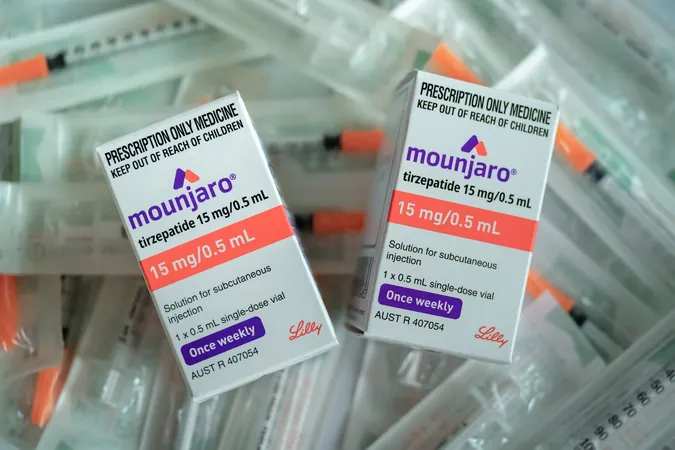
ESC 2025: Tirzepatide Takes the Lead in CVD Risk Reduction – What You Need to Know!
2025-09-01
Author: Emily
Revolutionary Results Unveiled at ESC Congress 2025
At the recent European Society of Cardiology (ESC) Congress 2025, groundbreaking findings from a post-hoc analysis of the SURMOUNT-5 trial were revealed, highlighting tirzepatide's superiority in reducing cardiovascular disease (CVD) risk compared to semaglutide among adults grappling with obesity but without type 2 diabetes or existing CVD.
Ten-Year CVD Risk Reduction: A Closer Look
With a primary goal of minimizing CVD risk in obesity management, this analysis focused on estimating the ten-year CVD risk reduction while also projecting preventable primary CVD events across the US and five European countries (France, Germany, Italy, Spain, and the UK). The research incorporated a BMI-based Framingham CVD risk score to calculate the ten-year risks among participants who underwent 72 weeks of treatment, providing a nuanced look at how factors such as sex, race, and initial BMI influenced outcomes.
Tirzepatide Outshines Semaglutide Right from the Start
Presented by Professor Mamas Mamas from Keele University, the findings indicated that while both GLP-1 receptor agonists reduced ten-year CVD risk, tirzepatide achieved a significant edge: a 2.4% reduction compared to semaglutide’s 1.4% (p<0.001). Remarkably, this divergence in effectiveness was detectable as early as 12 weeks into the trial and only progressed over time.
Impressive CVD Risk Reduction Numbers
By the end of the study, patients on tirzepatide (doses of 10mg or 15mg) exhibited a staggering 23.7% decrease in projected ten-year CVD risk versus a modest 13.6% with semaglutide (1.7mg or 2.4mg) (p<0.001). Not just a number on paper, this drug consistently outperformed semaglutide across key risk factors such as BMI, systolic blood pressure, LDL cholesterol, HbA1c, and hypertension.
A Potential Game-Changer in CVD Prevention
These projections, derived from the treatment-eligible populations, suggest that tirzepatide could prevent over 3.1 million CVD events in the US and the combined 5EU over the next decade, compared to an estimated 1.8 million events prevented by semaglutide across all six nations. Such impressive figures highlight tirzepatide’s emerging dominance in primary CVD prevention for those with obesity.
Expert Opinions Reinforce Health Beyond Weight Loss
Top opinion leaders emphasized the importance of not just focusing on weight loss, but also improving overall health — including diabetes control, hypertension management, and lipid levels. They stressed the need to consider cardiovascular outcomes in these conversations.
Obesity and CVD Treatment Landscape Expanding
According to data from GlobalData, the landscape for obesity treatments is bustling with promising candidates: 35 in Phase III, 94 in Phase II, and 111 in Phase I trials globally. In parallel, there are 96 Phase III, 201 Phase II, and 206 Phase I candidates addressing CVD, signaling a dynamic future ahead for both fields.









 Brasil (PT)
Brasil (PT)
 Canada (EN)
Canada (EN)
 Chile (ES)
Chile (ES)
 Česko (CS)
Česko (CS)
 대한민국 (KO)
대한민국 (KO)
 España (ES)
España (ES)
 France (FR)
France (FR)
 Hong Kong (EN)
Hong Kong (EN)
 Italia (IT)
Italia (IT)
 日本 (JA)
日本 (JA)
 Magyarország (HU)
Magyarország (HU)
 Norge (NO)
Norge (NO)
 Polska (PL)
Polska (PL)
 Schweiz (DE)
Schweiz (DE)
 Singapore (EN)
Singapore (EN)
 Sverige (SV)
Sverige (SV)
 Suomi (FI)
Suomi (FI)
 Türkiye (TR)
Türkiye (TR)
 الإمارات العربية المتحدة (AR)
الإمارات العربية المتحدة (AR)